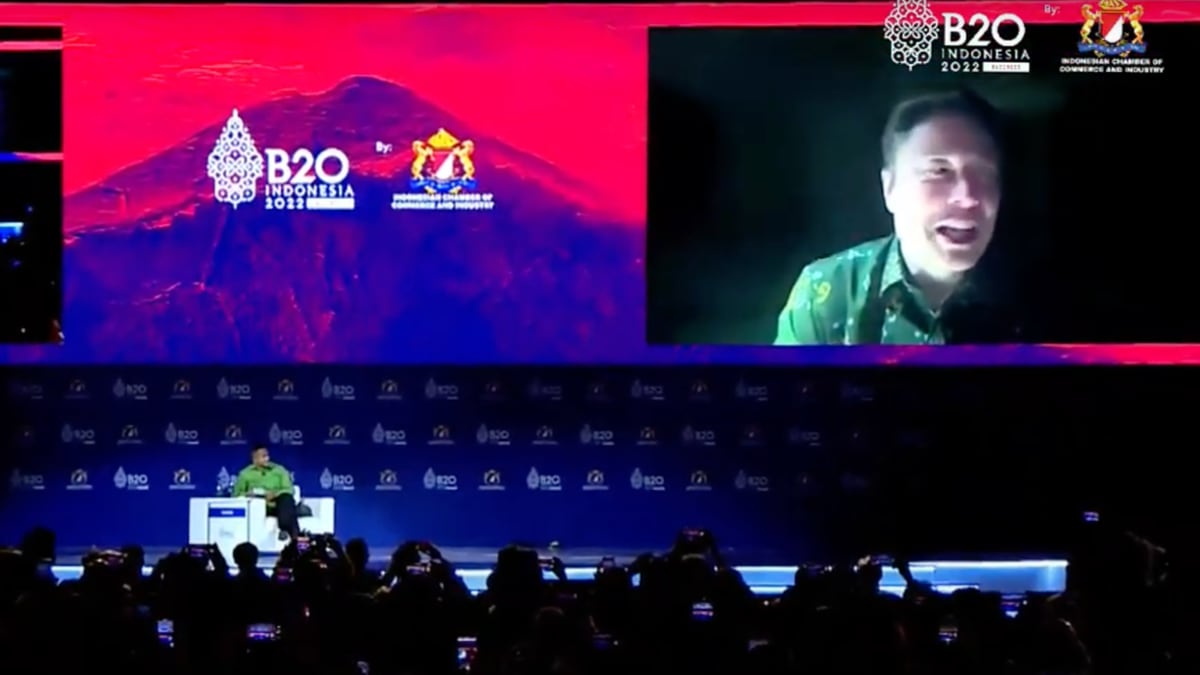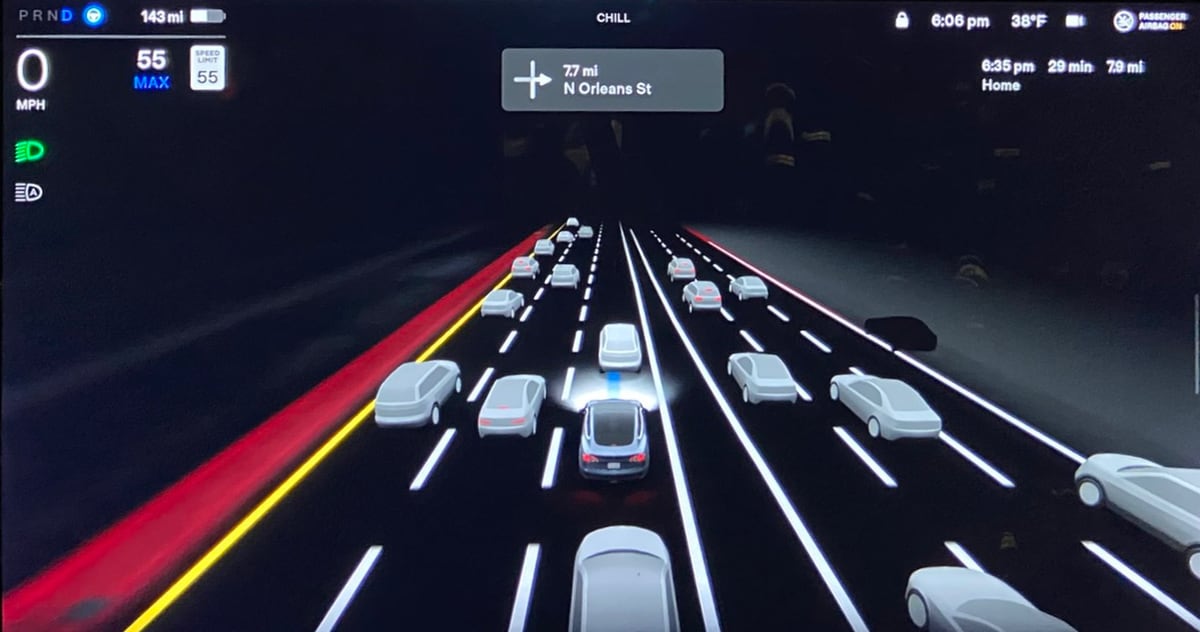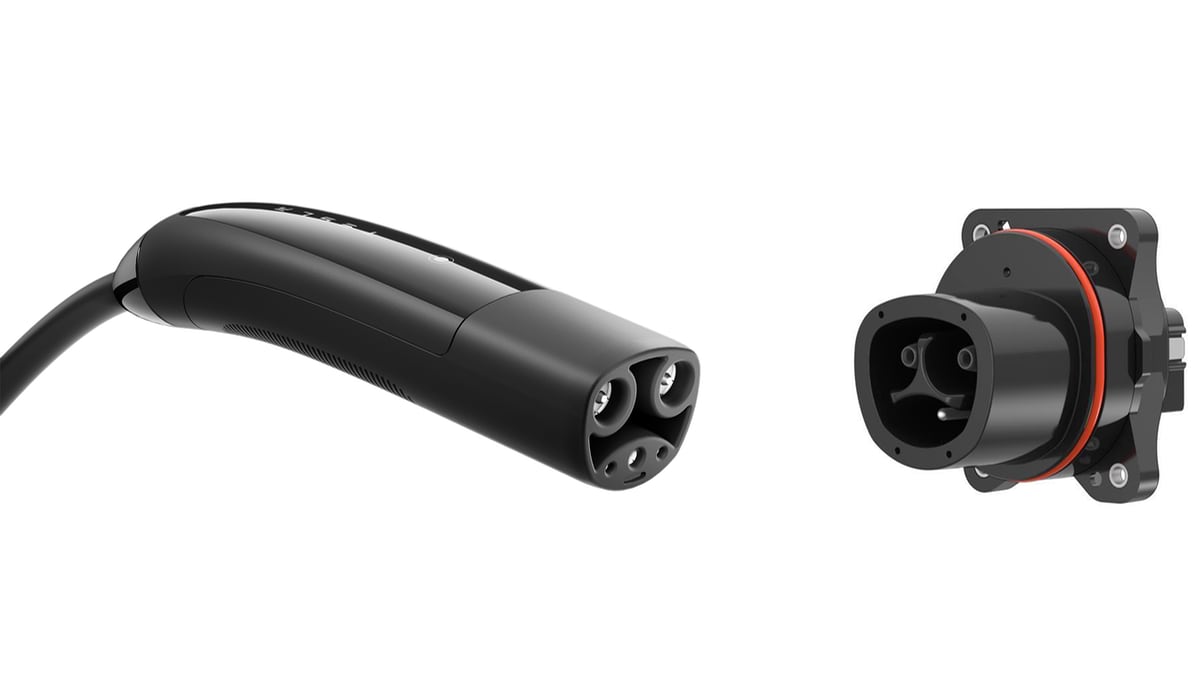November 14, 2022
By Kevin Armstrong

Elon Musk has said it before but will repeat it whenever asked. While virtually attending the B20 conference in Indonesia, Musk was asked about creating a smaller, more affordable car. The moderator suggested it be called the Model I for India or Indonesia. It’s a reoccurring question, but with competition also targeting a cheaper price point, Tesla must find a way to get there.
Musk responded to the question familiarly, “I can’t speak too much to the future of Tesla product development, except to say that we do think that making a much more affordable vehicle would make a lot of sense and we should do something.”
It’s something Tesla will have to do. Volvo’s CEO Jim Rowan told Automotive New Europe that EVs should be at price parity with gas cars in a couple of years.
The manufacturer has also teased a small EV that it sees as entry-level for consumers. It’s set a goal of producing 600,000 battery-powered vehicles by 2025. So far this year, it has made 40,500. Therefore, the new small vehicle the company is talking about would have to be a price point that would move many cars. Rowan said, “city car aimed at a younger demographic who can subscribe to it and make it their first Volvo.”
Elon Musk at the B20 Conference
[embedded content]
Tesla has already brought down the price of producing electric vehicles, but Volvo says it can do better. Volvo said during its Capital Markets Day presentations that it plans to have battery pack costs down to less than $100 per kilowatt hour by 2025-26. A recent tear-down of the Tesla Model 3 pack, overseen by analysts from UBS bank, showed a cost of $131 per kWh.
During the third quarter earnings call, Musk said that Tesla’s new vehicle development team was already working on the next platform and would incorporate everything the company has learned from Models S, 3, X, Y, Semi and Cybertruck.
He also said that the target was to create a 2-for-1, as in producing two cars using the same effort it currently takes to build one. “It will be smaller, to be clear. But it will, I think, certainly become, certainly exceed the production of all our other vehicles combined.”
There have been rumblings of a Model 2, a vehicle that would cost around $25,000, for a few years around Tesla.
With the company having a hard time keeping up with orders for the Model 3 and Model Y, that didn’t seem necessary. However, Musk could also be alluding to the company’s upcoming Robotaxi, or possibly a platform will be shared by both vehicles.
The company must address the need for a cheaper vehicle with the competition catching up and targeting areas where Tesla doesn’t currently offer products.
November 14, 2022
By Kevin Armstrong

Tesla’s creative release of Full Self Driving (FSD) Beta Version 11, at 11:11 on November 11, signified much more than just an ironic binary code reference. All those ones fit brilliantly with FSD transitioning to a single stack, a system the Autopilot team has been working on for some time, and Elon Musk has stated his confidence. V11 spent the weekend with a limited number of users, believed to be some Tesla employees, but this version is expected to be operational in thousands of vehicles by the end of the year.
Musk did commit that everyone who has FSD in the U.S. and Canada will be able to access the program by the end of this year, possibly this month. However, a recent tweet by Musk sounds like it’s going to be a tight deadline to make it before 2023. Musk posted: Given all that is in V11, it will take a few weeks to expand the beta, then another few weeks to go wide release to US & Canada.
The final V11 release notes will likely require a few pages. However, we did post the information that is available at this time, which includes moving to a single-stack solution and improved occupancy networks:
Enabled FSD Beta on highway. This unifies the vision and planning stack on and off-highway and replaces the legacy highway stack, which is over four years old. The legacy highway stack still relies on several single-camera and single-frame networks, and was setup to handle simple lane-specific maneuvers. FSD Beta’s multi-camera video networks and next-gen planner, that allows for more complex agent interactions with less reliance on lanes, make way for adding more intelligent behaviors, smoother control and better decision making.
Improved Occupancy Network’s recall for close by obstacles and precision in severe weather conditions with a 4x increase in transformer spatial resolution, 20% increase in image featurizer capacity, improved side camera calibration, and 260k more video training clips (real-world and simulation).
The highly anticipated and publicized 10.69 version will apparently not be the one that goes as the wide release. Musk jumped several numbers when naming the last FSD update. He thought it was so special it deserved a 69. Nevertheless, after a few significant updates to the .69 version, FSD has outgrown that number, and a new version name is needed.
The latest beta is version 10.69.3, although it’s currently only available to employees and the original 1,000 public testers.
Next Beta
The plan was for beta 10.69.3 to slowly go out to all public testers, however, rumor has it that Tesla found several issues that need to be fixed before the beta is expanded further.
At this point, it’s not clear whether Tesla will fix these issues with a minor update such as beta 10.69.3.1 and resume rolling out the beta or if Tesla will instead focus on updating users to v11.
If Tesla plans to have v11 on everyone’s vehicles before the end of the year, they’ll need to move quickly as there are roughly seven weeks before 2023.
When Tesla decides to expand FSD Beta v11 beyond employees, they’ll likely be looking for feedback for any improvements needed. Due to the number of changes in v11 we may see this beta roll out slower than usual. I’d also expect v11 to have multiple revisions with fixes and minor improvements before it’s released to the many owners who have never used FSD Beta before.
From Elon’s comments on Twitter, it sounds like Tesla will gradually add more users to the FSD Beta until it’s eventually available to everyone in the U.S. and Canada.
FSD Beta is expected to be available to more than 1 million users before the end year, more than 6x the number of users who have access to it today.
If Tesla decides to stick with the 1’s and binary theme, the launch date may be January 1 at 11:11. That would be one way to ring in the new year.
November 12, 2022
By Kevin Armstrong

Tesla removed all the patents in the lobby of its Palo Alto headquarters prompting Elon Musk to explain in a blog, “They have been removed, in the spirit of the open source movement, for the advancement of electric vehicle technology.” The post is from 2014; he continued, “Tesla Motors was created to accelerate the advent of sustainable transport.” That policy has been held, but some designs have not been for public consumption, including its industry-leading charging connector — until now.
A new post on the Tesla website reiterates Musk’s words from eight years ago. “In pursuit of our mission to accelerate the world’s transition to sustainable energy, today we are opening our EV connector design to the world,” states the company. “We invite charging network operators and vehicle manufacturers to put the Tesla charging connector and charge port, now called the North American Charging Standard (NACS), on their equipment and vehicles.”
Strategic Play
It is a generous move but also a clever, strategic play. There is no doubt that electric vehicles are here to stay. The question is, what will the nozzle be on the gas pump of the future? With more private companies getting into the EV charging game, this move makes it easy for them to add the Tesla connector to their equipment. Tesla has already been in discussions with some of those companies. The post states, “network operators already have plans in motion to incorporate NACS at their chargers, so Tesla owners can look forward to charging at other networks without adapters.
The company says that its connector, the NACS, is North America’s most common charging standard. Tesla states, “NACS vehicles outnumber CCS two-to-one, and Tesla’s Supercharging network has 60% more NACS posts than all the CCS-equipped networks combined.” EV owners who don’t have NACS will have fewer options to charge up. Car manufacturers are already racing to get into the EV game and don’t also need to try to play catch up to Tesla’s already well-established charging network. Tesla states, “we look forward to future electric vehicles incorporating the NACS design and charging at Tesla’s North American Supercharging and Destination Charging networks.”
It’s ingenious to drop the Tesla brand off and name it the North American Charging Standard. It will make it much easier for competing brands to swallow their pride and use superior technology. The system is the most tested EV charger in the world, and the company reports it has “20 billion EV charging miles to its name.” It is also far better than the Combined Charging System (CCS 1), offering twice the power in half the size.
A petition to the U.S House of Representatives was started in July 2022, asking for the Tesla connector to be the charging standard for the U.S. A solar-powered car company named Aptera is behind the Change.org petition that has more than 40,000 signatures. It links to reports showing the Tesla connector wins in every category tested.
While CCS 2 has become the charging standard in Europe, the market is wide-open in North America where the CCS 1 connector has not yet taken off.
There is a comment on the Change.org website worth noting. Eric Stewart posted, “The Tesla connector is what engineers would choose if politics didn’t make these things about ego.” Now, if NACS is not the standard, it will be crystal clear that Stewart is right.
Techyrack Website stock market day trading and youtube monetization and adsense Approval
Adsense Arbitrage website traffic Get Adsense Approval Google Adsense Earnings Traffic Arbitrage YouTube Monetization YouTube Monetization, Watchtime and Subscribers Ready Monetized Autoblog
from Tesla Cars – My Blog https://ift.tt/obWTx2G
via IFTTT



No comments:
Post a Comment